education
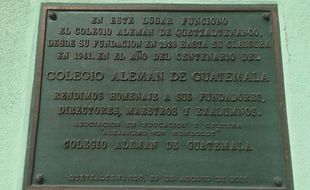
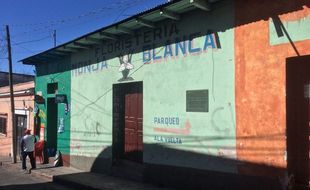
On 3a Calle, Quetzaltenango, (On the left when traveling east)
En este lugar funciono el Colegio Aleman de Quetzaltenango, desde su fundación en 1928 hasta su clausura en 1941. En el año del centenario del Colegio Aleman de Guatemala Rendimos homenaje a sus fundadores, directores, maestros y exalumnos. Asociacion de Educacion y Cultura “Alejandro von Humboldt” Colegio Aleman de Guatemala Quetzaltenango, 25 de agosto de 2001 English translation: In this building was the German School of Quetzaltenango, from its foundation in 1928 until its closure in 1941. In the year of the 100th anniversary of the German School of Guatemala We pay homage to its founders, directors, teachers and alumni. Association of Education and Culture "Alejandro von Humboldt" German School of Guatemala Quetzaltenango, August 25, 2001
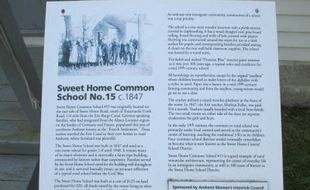
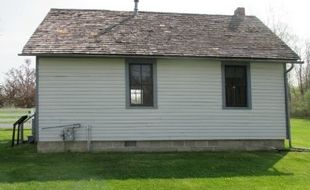
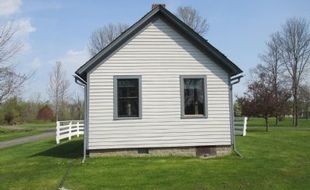
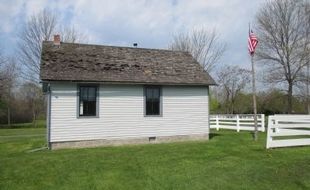
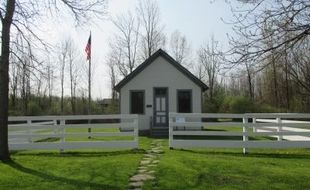
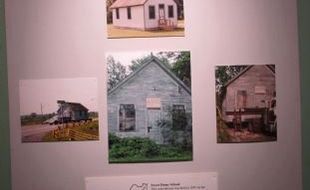
Near Tonawanda Creek Road, Amherst,
Sweet Home Common School #15 was originally located on the east side of Sweet Home Road, south of Tonawanda Creek Road, 1/4 mile from the Erie Barge Canal. German-speaking families, who had emigrated from the Alsace-Lorraine region on the border of Germany and France, populated this area of northwest Amherst known as the "French Settlement." These settlers traveled the Erie Canal to their new homes in rural Amherst, where farmland was plentiful. The Sweet Home School was built in 1847 and used as a one-room school for grades 1-8 until 1948. It retains many of its major elements and is essentially a farm-type building, constructed by farmers rather than carpenters. Families served by the Sweet Home School cared for the building well throughout its use, and it survived basically intact, an accurate reflection of a typical rural school before the Civil War. The Sweet Home School was built at a cost of $125 on land purchased for $20, all funds raised by the voters living in what was known as Sweet Home District #15. As with any immigrant community, construction of a school was a top priority. The school is a one-story wooden structure with a plank exterior covered in clapboarding. It has a wood-shingled roof, pine board ceiling, board flooring and walls of lath covered with plaster. Shelving was constructed around the room for use as a desk surface for pupils, and corresponding benches provided seating. A closet on the rear wall held classroom supplies. The school was heated by a wood stove. The faded and nicked "Prussian Blue" interior paint remains as it was over 100 years ago, a typical color and condition for a mid-19th-century school. All furnishings are reproductions, except for the original "sandbox" where children learned to make letters of the alphabet with a stylus in sand. Paper was a luxury in a mid-19th-century farming community, and from the sandbox, young writers would go on to use a slate. The teacher utilized a raised wooden platform in the front of the room. In 1847, the first teacher, Mathias Fuller, was paid $14 a month. Teachers usually boarded with a local farm family. The two small rooms on either side of the door are separate cloakrooms for girls and boys. In the early 19th century, the common or rural school was primarily under local control and served as the community's center of learning, teaching the traditional 3 R's to its children. Four common school districts would eventually consolidate to become what is now known as the Sweet Home Central School District. Sweet Home Common School #15 is a good example of rural vernacular architecture, representing the center of everyday life in an immigrant community, as well as 100 years of history in the Sweet Home School District.
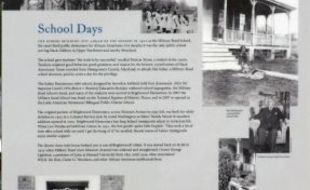
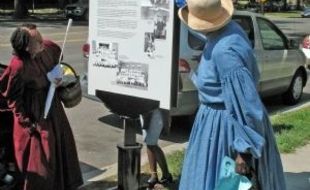
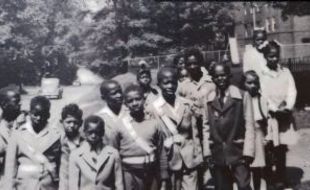
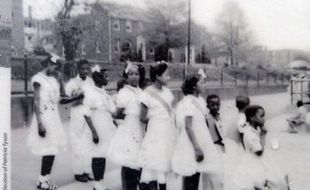
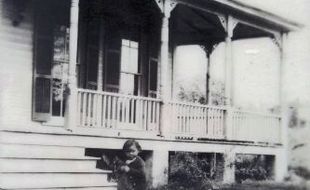
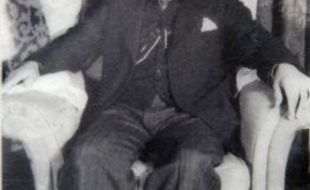
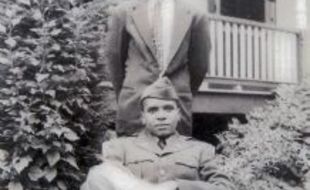
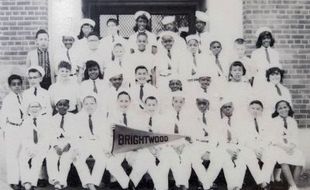
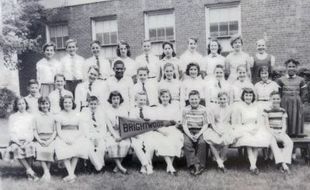
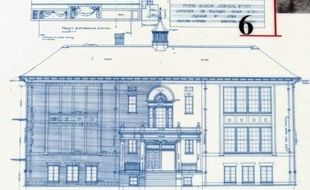
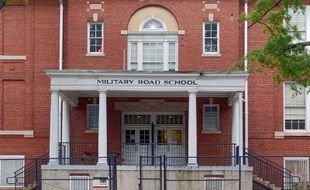
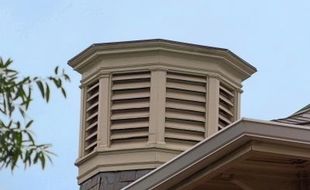
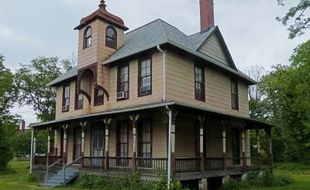
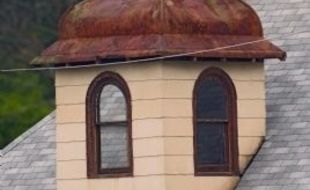
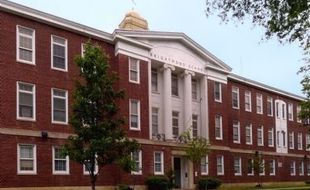
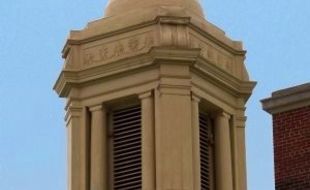
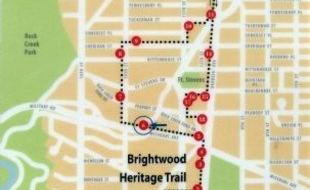
On Missouri Avenue, Brightwood, (On the right when traveling west)
The School Building Just Ahead of You Opened In 1912 as the Military Road School, the area's third public elementary for African Americans. For decades it was the only public school serving black children in Upper Northwest and nearby Maryland.
The School gave students "the tools to be successful" recalled Patricia Tyson, a student in the 1950s. Teachers required good behavior, good grammar, and respect for the historic contributions of black Americans. Tyson traveled from Montgomery County, Maryland, to attend. Her father, a military Road school alumnus, paid 62 cents a day for the privilege.
The Italian Renaissance style school, designed by Snowden Ashford, held four classrooms. After the Supreme Court's 1954 Brown v. Board of Education decision outlawed school segregation, the Military Road School closed, and many of the students were moved to Brightwood Elementary. In 2003 the Military Road School was listed on the National Register of Historic Places, and in 2007 re-opened as the Latin American Montessori Bilingual Public Charter School.
The original portion of Brightwood Elementary, across Missouri Avenue on your left, was built for white children in 1925 in a colonial revival style by noted Washington architect Waddy Wood. Its modern addition opened in 2005. Brightwood Elementary has long helped immigrants adjust to American life. When Leo Vondas arrived from Greece in 1955, the first grader spoke little English. "They took a lot of time after school with me until I got the hang of it," he recalled. Recent waves of Latino immigrants enjoy similar support.
The Queen Anne style house behind you is one of Brightwood's oldest. It was moved back on its lot in 1933 when Military Road (now Missouri Avenue) was widened and straightened. Owner George Lightfoot, a professor of Latin at Howard University from 1891 until 1939, often entertained W.E.B. Du Bois, Carter Woodson, and other African American intellectuals here.
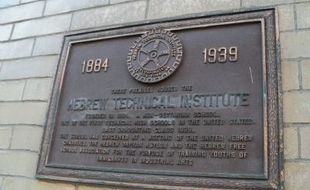
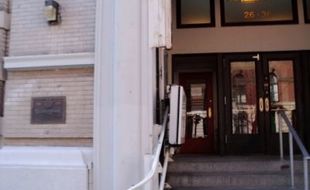
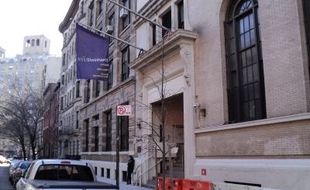
On Stuyvesant Street, New York, (On the right when traveling east)
These premises housed the Hebrew Technical Institute Founded in 1884. A non-sectarian school. One of the first technical high schools in the United States. Last graduating class 1939. The school was conceived at a meeting of the United Hebrew Charities, the Hebrew Orphan Asylum and the Hebrew Free School Association for the purpose of training youths of immigrants in industrial arts.
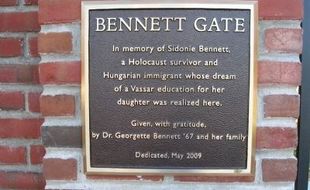
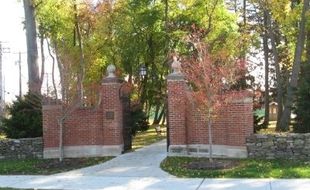
On Raymond Avenue (State Route 376) , Poughkeepsie, (On the left when traveling south)
Bennett Gate
In memory of Sidonie Bennett,
a Holocaust survivor and
Hungarian immigrant whose dream
of a Vassar education for her
daughter was realized here.
Given, with gratitude,
by Dr. Georgette Bennett '67 and her family
Dedicated, May 2009
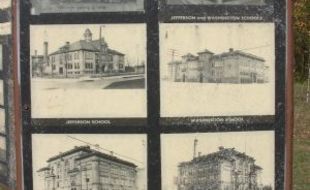
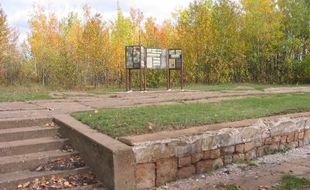
On Lincoln Street, near Hibbing, (On the left when traveling east)
Education was very important to the new immigrants. They wanted their children to have an education that they were unable to have.
From small schools in the early years to bigger and better schools such as the Lincoln High School that was on this site with its gym and swimming pool, to the Washington and Jefferson Elementary Schools two blocks to the north, the dream of a good education system for their children was fulfilled.
